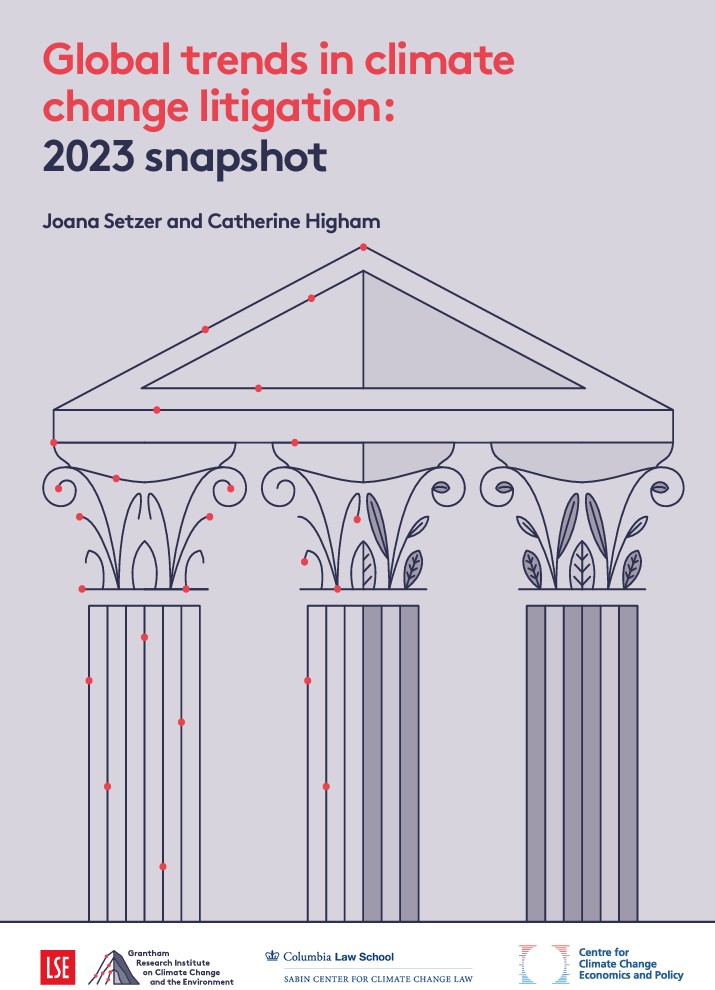
On 29 June the LSE / Grantham Institute published its invaluable annual ‘snapshot’ report on global developments in climate change litigation. The Key messages summary is attached, and the full report will be found at this address: https://www.lse.ac.uk/granthaminstitute/wp-content/uploads/2023/06/Global_trends_in_climate_change_litigation_2023_snapshot.pdf
The headlines are that ‘climate change litigation’ is progressing across more and more jurisdictions (seven new countries are identified), a total of 81 climate washing cases have been filed globally, and there is the usual progression of public law and international cases, as well as ‘strategic’ and ‘framework’ cases. (‘Strategic’ cases are “cases filed with the aim of influencing the broader debate around decision-making with climate change relevance” and ‘Framework’ cases are concerned with climate plans and policies and cover governments, corporations and even finance.)
Public law, greenwashing, international and strategic claims are all of interest, but litigation only ever has teeth when there are private law claims to pursue. The wider cohort of climate cases exist in England and Wales, but what can litigation in other jurisdictions tell us about oncoming private law claims?
The Grantham report classes private law cases as “Polluter pays” (compensation) cases, citing 17 which have been filed outside the US between 2015 and 2023.
The progress of the US claims has been fascinating. The report identifies 20 cases filed by US cities and states against carbon majors, and it seems that, after lengthy preliminary skirmishing, these are now likely to go to trial. 60 cases are said to have been filed globally, although not all are for damages. Of these, the more interesting claims are for damages, mainly to pay for the infrastructure necessary for future resilience, with a few cases seeking damages for historic climate-related events.
In England and Wales, related claims have been brought where there have been specific pollution events, notably for the extraction of oil from the ground in Africa. Claims in nuisance for damages as a result of changes to the climate, on the other hand, face forbidding challenges when to comes to causation. Nuisance would be the tort of choice as a tort of strict liability, although in the US, pollution claims are also brought as claims in trespass by reason of the direct presence of particulates.
In the 2023 snapshot, the authors have been prepared to speculate more readily than before as to future trends. Understandably, their suggestions are tentative, but they show the direction of travel, identifying a variety of scientific and economic studies designed to progress causation arguments, some of which are already in use in other jurisdictions.
Under the heading “Short-lived climate pollutants”, the authors also develop a specific suggestion in the agricultural sector: “Nuisance cases could also be potentially filed against farms that emit methane and ammonia. These lawsuits can be based on existing tort or human rights laws, and regulations related to pollution and environmental protection, as well as on specific environmental legislation that seeks to hold polluters accountable for the damage they cause to the climate.”
The 2023 Grantham snapshot report contains a great deal of interest to unpick, claims for damages in nuisance (and also in trespass), meriting further detailed analysis. Private law climate change cases in England and Wales are not yet on the horizon, but I hope to be able to have a further look at arguments latent in the report and its contents. Anyone interested in climate change litigation who does not know the report, will find it an invaluable source.
Gordon Wignall 4th July 2023
gordonwignall.co.uk
wiglaw.co.uk


